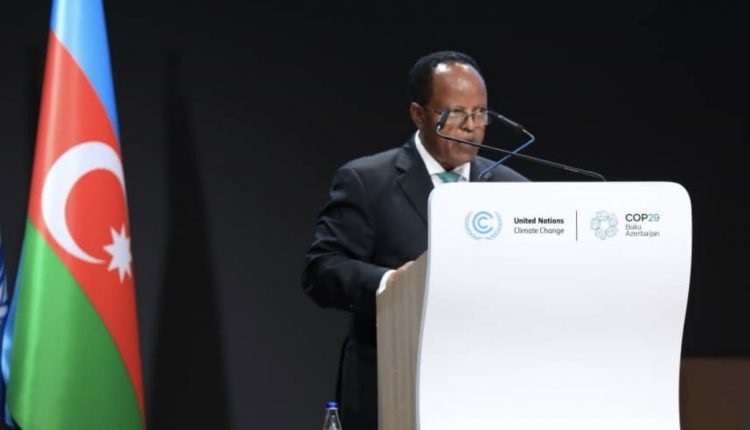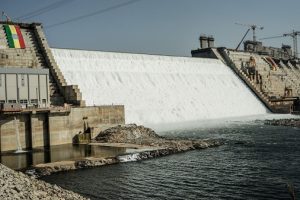
Ethiopia, a nation with a rapidly growing population and significant economic challenges, has emerged as an unlikely leader in the fight against climate change. By embracing bold climate strategies and committing to sustainable development, the country has positioned itself as a green champion on the global stage. Ethiopia’s proactive engagement with the Paris Agreement and its active participation in the Conference of the Parties (COP) underline its determination to combat climate change and ensure a sustainable future.
The country’s approach to climate action is deeply rooted in its Climate-Resilient Green Economy (CRGE) strategy. The CRGE strategy is a comprehensive framework designed to achieve two primary objectives: transitioning to a middle-income economy by 2030 and maintaining net-zero greenhouse gas (GHG) emissions. This dual goal reflects Ethiopia’s recognition that economic development and environmental sustainability must go hand in hand.
With its expanding renewable energy, the country aims to exploit its vast renewable energy potential, including hydro, wind, solar, and geothermal resources, to power economic growth and provide energy access. The strategy emphasizes sustainable land management practices to boost agricultural productivity while reducing emissions. The country is focused on designing infrastructure that can withstand the impacts of climate change. These measures align with global climate goals and highlight Ethiopia’s leadership as a green economy champion in Africa and beyond.
The country was among the first nations to ratify the Paris Agreement, a landmark global pact adopted in 2015 to limit global warming to below 2°C while striving for a 1.5°C target. Recognizing the urgency of climate action, Ethiopia submitted ambitious Nationally Determined Contributions (NDCs) to guide its efforts under the agreement.
The country’s initial NDC set a target to reduce GHG emissions by 64% from business-as-usual levels by 2030, one of the most ambitious goals submitted by any developing country. This commitment encompasses the following key sectors:
Through its green initiative policies and strategies, the country has prioritized expanding its renewable energy infrastructure. Flagship projects like the Grand Ethiopian Renaissance Dam (GERD) and wind farms across the country aim to not only meet domestic energy needs but also export electricity to neighboring nations.
Reforestation and afforestation initiatives are at the core of Ethiopia’s strategy. The country plans to restore millions of hectares of degraded land, creating critical carbon sinks. Sustainable agricultural practices, including soil conservation, water-efficient irrigation, and agroforestry, are being scaled up to enhance food security and reduce emissions. Investments in clean transportation, urban green spaces, and energy-efficient housing are part of Ethiopia’s broader strategy to mitigate climate impacts. The government revised NDCs, submitted in 2021, and further emphasized the importance of adaptation measures, given the country’s vulnerability to climate-induced disasters such as droughts, floods, and desertification.
The country has earned global recognition for its innovative and large-scale environmental initiatives. These programs not only support its national goals but also contribute to global efforts to mitigate climate change.
In 2019, Ethiopia launched the Green Legacy Initiative, a national reforestation campaign aimed at combating deforestation and restoring ecosystems. The initiative set an ambitious target to plant 20 billion trees by 2030. By 2024, the program had already achieved remarkable milestones, with over 25 billion seedlings planted across the country. The Green Legacy Initiative is not just a tree-planting campaign—it also emphasizes biodiversity conservation, soil rehabilitation, and community engagement. Millions of Ethiopians have participated in the program, highlighting the role of grassroots efforts in driving climate action.
The country’s focus on renewable energy has made it a leader in clean energy generation in Africa. The Grand Ethiopian Renaissance Dam (GERD), set to be Africa’s largest hydroelectric dam, will significantly boost Ethiopia’s renewable energy capacity while reducing reliance on fossil fuels. In addition to hydroelectric power, Ethiopia has invested in wind and geothermal energy projects, contributing to its ambition to become a regional energy hub.
In terms of agricultural sector, which employs over 70% of its population, is highly vulnerable to climate change. To address this challenge, the government has introduced climate-smart agriculture techniques, including conservation tillage, agroforestry, and drought-resistant crops. These measures not only enhance productivity but also reduce emissions and improve resilience to climate shocks.
Ethiopia has been an active participant in the annual Conference of the Parties (COP) meetings under the UN Framework Convention on Climate Change (UNFCCC).
The government has emphasized the principle of common but differentiated responsibilities, calling on developed nations to take greater responsibility for their historical emissions and provide financial and technological support to developing countries.
In his remarks at the 29th edition of Conference of the Parties to the United Nations Framework Convention on Climate Change (COP 29) Summit in Azerbaijan, the FDRE President Taye Atske Selassie outlined Ethiopia’s major initiatives towards a journey to the green future
Extending his sincere gratitude to the COP29 host country Azerbaijan, the President said: “We aspire and hope to translate our Paris Agreement commitment in to tangible actions. We must collectively reverse humanity’s trajectory of destruction and do justice the victims of climate change, particularly vulnerable nations in Africa and small island states.”
Highlighting the success story of the Green Legacy initiative to date, President Taye said Ethiopia was able to plant 40 billion tree seedlings, expanding the country’s forest coverage to 23.6 percent with a potential to sink ten billion tons of carbon. The government earmarked 1 percent of the country’s annual budget for the Green Legacy and Land Restoration Fund.
The President noted that this initiative can be scaled up further, appealing for global support to scale up such endeavors.
On the wheat production, the President asserted that Ethiopia’s heat-resistant wheat project yielded 107 million quintals of wheat in three years, making the country’s food system carbon-negative and the crops climate resilient. With adequate financial support, Ethiopia’s model can be replicated globally.
Meanwhile, as part of its national determined contributions, Ethiopia has demonstrated measurable and implementable renewable energy by heavily investing in hydro-based and diversified clean energy generation. The nation has accomplished this by leveraging its own domestic resources. In this regard, the country is successful in integrating energy grids in the region as well, Taye stated.
On reversing the declining urban space, Taye mentioned; “Cognizant of the fact that urban green space has declined, Ethiopia, through its corridor development program, prioritizes people-centered and climate smart approach to reverse this alarming trend. In this context, Addis Ababa is testament to this success.”
In addition, Ethiopia has now become among the few countries in the world to pass a law banning fuel automobiles as part of reducing the impact of greenhouse gas emission, he added.
Furthermore, the debate on climate finance has become overly complex and painstakingly slow-paced, the Ethiopian president noted, underscoring the imperative to simplify the process and focus on practical solutions.
President Taye also emphasized the need to finalize the new collective quantified goal on climate finance and make it operational. “While we demand increased financial support, we express deep concern over the inadequate, delayed and complex disbursement of existing funds.”
Many African nations are leading by example to the best of their abilities. In light of this, Ethiopia has adopted its subsequent Nationally Determined Contributions (NDCs), long-term low-emission government, and national adaptation plan that guide the collective commitment to significantly lessen the impacts of climate change, he mentioned.
Given its vulnerability to climate impacts, Ethiopia has urged the global community to increase funding for adaptation projects. At COP28, Ethiopia called for the operationalization of the Loss and Damage Fund to support countries facing irreversible climate impacts. It has highlighted the need for accessible, affordable technologies to implement renewable energy projects, improve agricultural resilience, and enhance disaster preparedness.
Having actively engaged in COP discussions, Ethiopia has positioned itself as a voice for vulnerable nations, ensuring that the interests of the Global South are represented in international climate negotiations. Despite its ambitious commitments, Ethiopia faces significant challenges in implementing its climate goals. As a developing country, Ethiopia relies heavily on international financing to support its climate initiatives. Delays in funding commitments from developed nations hinder progress.
Despite these challenges, the country has significant opportunities to enhance its contributions to global climate action. Its leadership in climate action underscores the crucial role that developing nations can play in addressing the global climate crisis. Through its ambitious CRGE strategy, commitment to the Paris Agreement, and active engagement in COP processes, Ethiopia has demonstrated that sustainable development and climate resilience are achievable, even in resource-constrained settings.
While challenges remain, Ethiopia’s progress serves as a beacon of hope and a call to action for the international community. By continuing to support Ethiopia’s efforts and honoring global commitments, the world can move closer to achieving a sustainable, equitable future for all.
BY STAFF REPORTER
THE ETHIOPIAN HERALD THURSDAY 21 NOVEMBER 2024




